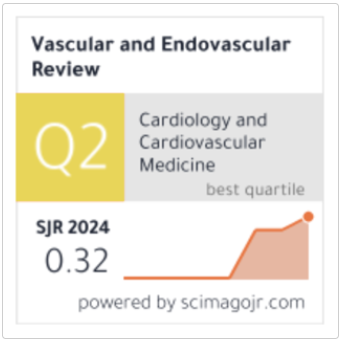Clinical Outcomes Of Endovenous Laser Ablation For Varicose Veins: A Prospective Study
Keywords:
Endovenous laser ablation, varicose veins, chronic venous insufficiency, minimally invasive surgery, great saphenous vein.Abstract
Background: Varicose veins represent a significant manifestation of chronic venous disease affecting 10-30% of men and 25-50% of women globally. Endovenous laser ablation (EVLA) has emerged as a minimally invasive alternative to traditional surgical approaches, offering superior recovery profiles with comparable efficacy.
Objective: To evaluate the clinical outcomes of EVLA for varicose veins, focusing on symptom resolution, vein closure rates, and complication profiles over a 12-month follow-up period.
Methods: This prospective observational study included 23 patients with symptomatic varicose veins treated with EVLA using a 1470 nm diode laser between September 2023 and March 2025. Patients were evaluated using the Venous Clinical Severity Score (VCSS) and CEAP classification preoperatively and at 72 hours, 3 weeks, 6 months, and 12 months post-procedure. Primary endpoints included Great Saphenous Vein (GSV) closure rates and symptom resolution. Secondary endpoints included complication rates and quality of life improvements.
Results: The study included 13 males (56.52%) and 10 females (43.48%) with a mean age of 48.52 ± 6.70 years. GSV closure was achieved in 100% of patients at all follow-up intervals. Pain resolution showed progressive improvement from 100% mild pain at 72 hours to complete pain relief at 12 months. By the final follow-up, 69.6% of patients showed no visible venous disease according to CEAP classification. No cases of deep vein thrombosis or ulcer formation were observed throughout the study period.
Conclusions: EVLA demonstrates excellent efficacy and safety for varicose vein treatment, with sustained vein closure, progressive symptom resolution, and minimal complications. The procedure offers significant advantages in terms of recovery time and patient satisfaction compared to traditional surgical approaches.








